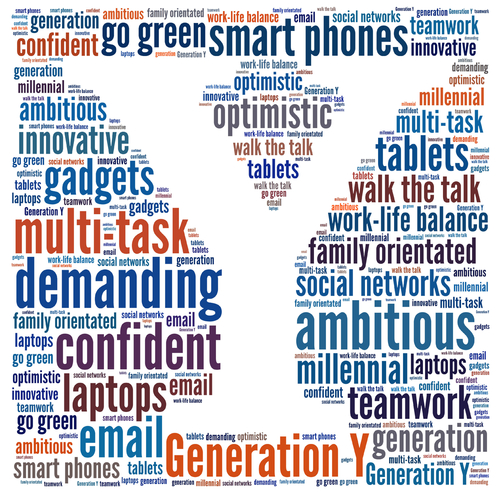 Gone are the days that local governments can attract top talent based only on the notion of job security. Furthermore, local governments across the country have been forced to lay off staff, reduce benefits, and cut core services. Additionally, even as the market improves, most municipalities are cautiously “testing the financial water” before hiring for new/existing positions.
Gone are the days that local governments can attract top talent based only on the notion of job security. Furthermore, local governments across the country have been forced to lay off staff, reduce benefits, and cut core services. Additionally, even as the market improves, most municipalities are cautiously “testing the financial water” before hiring for new/existing positions.
With the median age of millennial being 24 in 2014, there is the continual influx of millennials that have completed graduate school and are seeking to enter the workforce at a competitive position in the market. Top talent is seeking a variety of things: money, upward mobility, value-added impact, etc… Based on this reality, it may seem that local governments do not stand a chance!
I believe they do. It is about clearly articulating what local government can uniquely offer prospective employees (competitive advantage).
To communicate your competitive advantage, you will need to answer “Who are we?”, “What are we uniquely positioned to do?” and “What are we aspiring to be?”
Who are we?
Before communicating what you can offer, in the words of the Greek proverb written upon the temple of Apollo, “Know Thyself.” Local governments can achieve this by collecting a combination of quantitative/qualitative data to assess the current internal structures (SWAT & GAP Analysis) and the external environments (education, migration patterns, unemployment rates, current job market trends).
Engaging a diverse representation of community and business leaders, and local government staff can ensure a more credible response to “Who are we?” Also, finding ways to strategically incorporate key community and business leaders into the conversation early will lay the foundation for future collaboration in attracting top talent.
In Grand Rapids, MI municipal, business, and Grand Valley State University leaders embarked on a journey with college students to determine how to attract and retain millennials. Understanding who they were as a city before developing/implementing recommendations is critical to the initiatives’ overall success.
Read the group’s recommendations: Attracting and Retaining College Graduates A Student-Driven Model
What are we uniquely positioned to do?
Once you “know thyself” as an organization (current capabilities, strengthens, weaknesses, etc.), you are better positioned to define your niche. To define your niche, a city must articulate what distinguishes its local government from competitors in the market. It is prudent to use experienced internal or external analyst/consultants to complete the comparison, keeping in mind that the type and size of the competing market could impact your local government’s’ unique capabilities.
Clearly defining your niche provides you as a local government with information to target your efforts and resources to capitalize on the market.
Take for instance Pittsburgh, a rustbelt city that suffered a mass exodus of it population during the latter part of the 20th century into the beginning of the 21st century. Through the help of leaders in the government, universities, foundations, and the community, Pittsburgh was able to assess their resources and the current/future markets. The assessment helped them to identify what they were uniquely positioned to do (health care, education, and technology) currently and in the future.
Additionally, due to the city understanding what they were uniquely positioned to do and the need to strategically allocate limited resources, they have capitalized on these opportunities, which have paid dividends. Learn more: Rust Belt Renaissance: The Future American City.
Local governments can use Pittsburgh among other examples as a model for determining their competitive advantage and focusing organizational resources to attract and retain millennials.
What are we aspiring to be?
The next part of understanding a city’s competitive advantage is defining the vision for local government and ultimately the community. Answering “What are we aspiring to be?” requires the engagement of a diverse group of stakeholders in the conversation. More specifically, millennials need to be engaged to help craft this vision as they represent the future of our communities and local governments- the City of Grand Rapids (mentioned above) is a great example.
One proven method for developing aspirations for organizations and governments is the appreciative inquiry (AI) model. AI identifies the strengths of an organization and seeks to amplify those strengths. Usually comprised of four phases (discovery, dreaming, designing, delivery/destiny), this approach can be used as a tool to help local governments understand their vision and how to attain their competitive advantage.
As a result of local governments understanding their competitive advantage, they will be better able to attach and retain talented millennials as government employees. Additionally, community support and engagement in defining the competitive advantage and vision will create more opportunities for developing stronger buy-in inside and outside of local governments.
How is your local government working to understand its competitive advantage to attract millennials?



